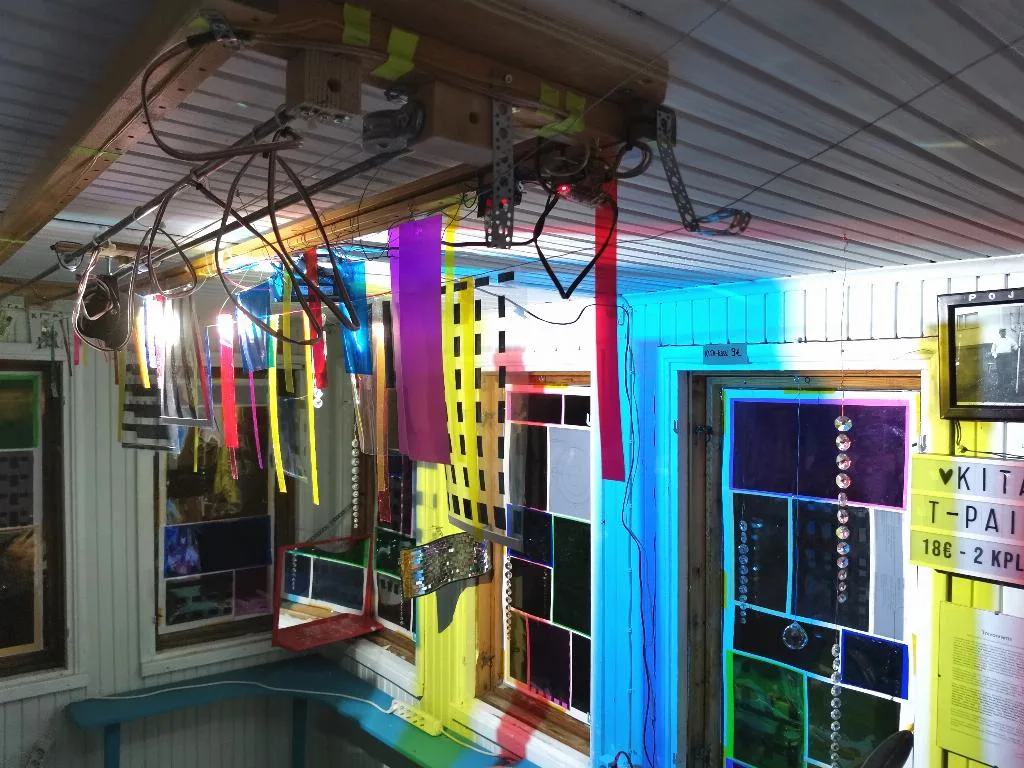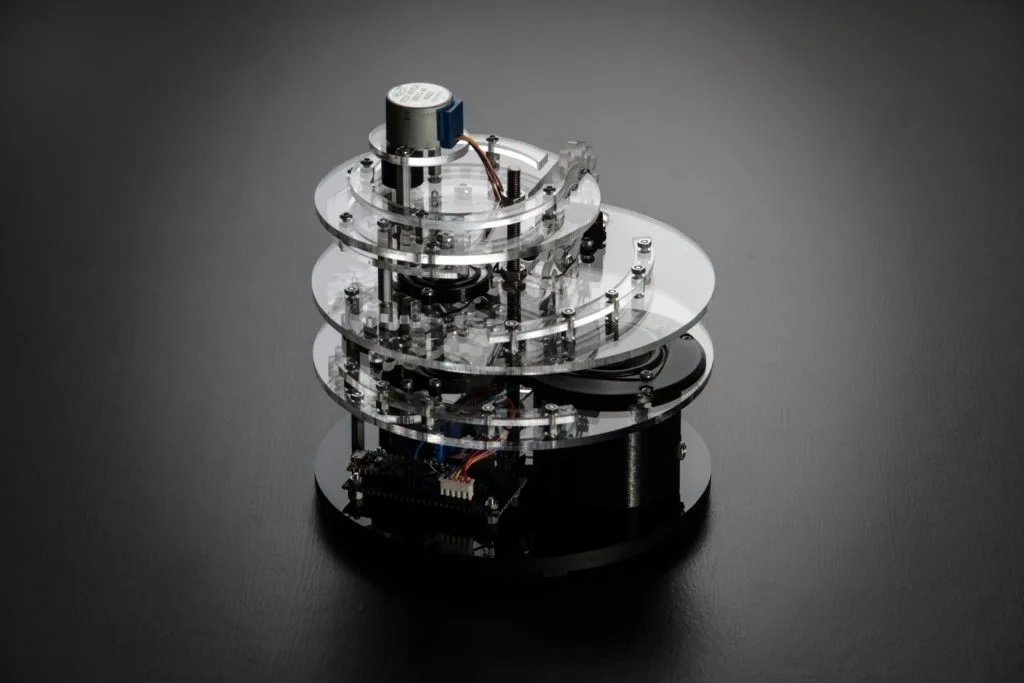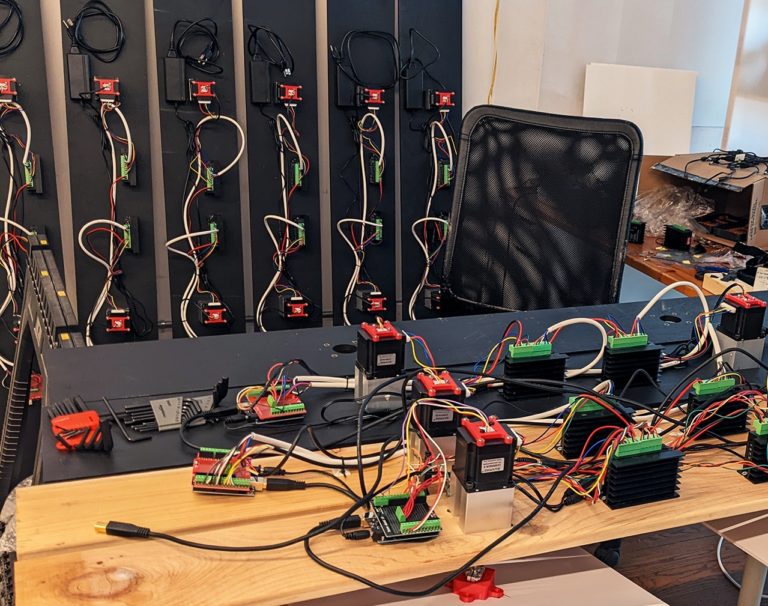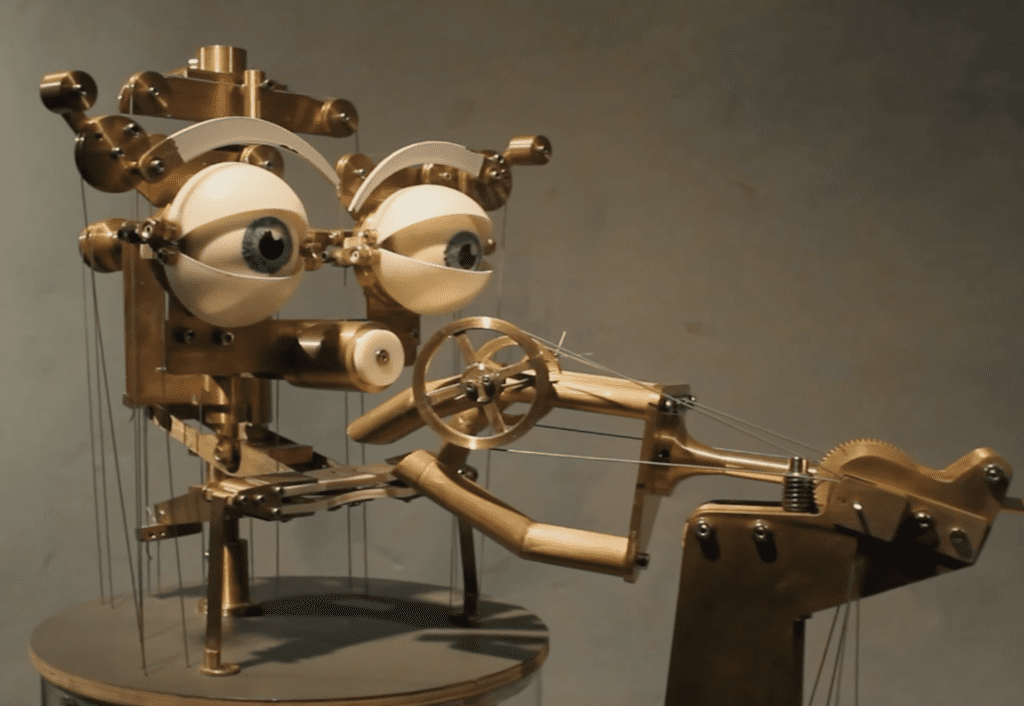Schlagwort: kinetic art
-

This kinetic light installation illuminates the Finnish snow
Reading Time: 2 minutesIf you’re ever driving through rural Finland about an hour south of Jyväskylä, you might come across the Haihatus art center. That includes KITA, “the house of kinetic arts.” You’ll recognize it right away by its bold swaths of vibrant paint. And if you come by at night, you’ll see the snow…
-

This kinetic sculpture is incredibly mesmerizing
Reading Time: 2 minutesThe great thing about art is that it doesn’t have to serve a purpose. When utility is irrelevant, the artist is free to express their creativity in whatever way they like. A painting doesn’t have to inspire introspection or revolution — it can just be something pretty to look at. In the…
-

Flux is a kinetic art installation brought to life with Arduino
Reading Time: 2 minutesArt may be subjective, but all of our readers can appreciate the technology that goes into kinetic art. That term encompasses any piece of art that incorporates movement, which means it can be as simple as a sculpture that turns in the wind. But by integrating electronics, artists can achieve impressive effects.…
-

Brenda is classic automata nightmare fuel
Reading Time: 2 minutesArduino Team — July 5th, 2022 Art is a strange thing. Sometimes its purpose is purely aesthetic. Sometimes it makes a statement. And sometimes it exists to disturb. Kinetic art is no different and some robots fall into this category. Graham Asker’s art elicits pondering on the relationship between humans and robots,…



